
Call Us Today!
508-488-9999
Home Blown-in Insulation & Gutter Solutions
31 March 2024
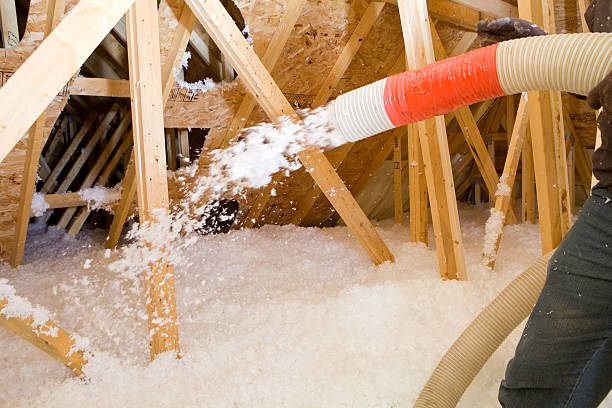
In the realm of home improvement, entrusting your insulation needs to knowledgeable professionals is paramount. That's where blown insulation steps in as a versatile solution, adept at optimizing your home's energy efficiency while ensuring your comfort year-round.
Blown insulation, renowned for its adaptability to hard-to-reach spaces, offers a superior insulation option that not only conserves energy but also slashes costs on your energy bill. Embrace the warmth of winter and the coolness of summer with this efficient insulation method.
Maintaining peak performance of your insulation is essential for a cozy home environment. Adequately insulating your attic serves as a cornerstone in this endeavor, shielding your living space from temperature extremes and yielding substantial savings. Whether your dwelling resides in a frigid climate necessitating warmth retention or faces scorching summers craving cool respite, a well-insulated attic is non-negotiable.
With blown-in insulation, the process involves infusing stud or joist cavities with insulation material boasting a high R-value, guaranteeing effective insulation throughout your home. This method entails the meticulous blowing of tiny insulation particles into walls, attics, joists, and cavities via a lengthy hose, ensuring comprehensive coverage and optimal thermal performance.
As the seasons shift and temperatures fluctuate, prioritizing attic insulation becomes paramount. Safeguard your abode and curtail energy expenditures with professional blown-in insulation services. Embrace a comfortable indoor milieu while simultaneously curbing your energy bills—a win-win situation for any homeowner.
Seize the opportunity to enhance your home's insulation prowess and embark on a journey toward heightened comfort and reduced energy costs. Schedule your blown-in insulation upgrade today to enjoy year-round tranquility and efficiency.
For additional insights and guidance on maximizing your home's insulation potential, don't hesitate to reach out to Custom Insulation Company, Inc. Our team stands ready to assist you on your path to a cozier, more energy-efficient home environment.
28 March 2024

Blanket insulation stands out as a preferred choice among homeowners due to its effectiveness, affordability, and longevity. Renowned for its exceptional performance, it remains a popular option for both new constructions and retrofit projects, promising enduring insulation solutions.
Understanding blanket insulation begins with recognizing its versatility, with R-values contingent upon thickness. For instance, a thickness of 3 ½ inches yields an R-value of approximately 11, while 12 inches thickness boasts an impressive R-value of about 38. With ratings ranging from R-2.9 to R-3.8 per inch, blanket insulation offers a spectrum of options to suit diverse insulation needs.
Designed to seamlessly fit into standard wall stud, attic, rafter, and floor joist spacings, blanket insulation ensures convenient installation and optimal coverage. Its applications extend beyond walls, proving effective as thermal insulation in various areas within your home. Notably, the attic emerges as a prime location for blanket insulation installation, catering to diverse insulation requirements with ease.
Embracing blanket insulation yields multifaceted benefits, transcending mere thermal regulation. Homeowners can anticipate lower energy bills, sustained comfort year-round, and enhanced noise reduction, fostering a tranquil living environment. Moreover, its affordability and ease of installation make it a cost-effective alternative to foam insulation, aligning with diverse budgetary constraints.
Navigating the realm of insulation choices warrants expert guidance. Consulting with an insulation expert like Custom Insulation Company, Inc., ensures an informed decision tailored to your unique needs. Also, homeowners gain access to comprehensive insights and tailored solutions, empowering them to optimize the comfort and efficiency of their living spaces.
Discover the transformative potential of blanket insulation and embark on a journey towards enhanced comfort, energy efficiency, and tranquility within your home. Contact Custom Insulation Company, Inc. today for invaluable tips and personalized guidance on maximizing the benefits of blanket insulation.
25 March 2024

In an era of escalating utility costs, homeowners seek innovative solutions to mitigate expenses while enhancing comfort. Spray foam insulation emerges as a transformative option, offering not only superior energy efficiency but also sound dampening properties, elevating the quality of living environments.
Delve into the realm of spray foam insulation and uncover its myriad advantages for homeowners seeking to optimize energy efficiency and thermal resistance. From its ability to seal gaps to its capacity for reducing unwanted noise, spray foam insulation revolutionizes the insulation landscape, providing a comprehensive solution for modern living spaces.
Experience the magic of spray foam insulation as it dramatically improves a building's energy efficiency, leading to reduced utility bills and enhanced thermal comfort. By effectively sealing gaps and minimizing air leakage, spray foam insulation acts as a barrier against heat transfer, ensuring that indoor temperatures remain consistent and comfortable year-round.
Addressing common concerns surrounding spray foam insulation, it's crucial to note that any off-gassing during installation is temporary and lasts only for seconds. Unlike some traditional insulation materials, spray foam insulation does not emit harmful gases over time, offering peace of mind to homeowners concerned about indoor air quality.
With its superior R-value, spray foam insulation outperforms traditional insulation materials, providing a higher level of thermal resistance and energy savings. Its ability to seal hard-to-reach nooks and crannies further enhances its effectiveness, ensuring that homes are well-protected from the elements.
Consider closed-cell spray foam insulation for your home insulation needs, as this remarkable material offers unparalleled insulation performance and durability. Whether keeping your home cozy in the winter or cool in the summer, closed-cell spray foam insulation delivers reliable comfort and efficiency, making it a worthwhile investment for homeowners.
Transform your home into a haven of comfort and efficiency with spray foam insulation. For personalized guidance and expert advice on harnessing the benefits of spray foam insulation for your home, reach out to Custom Insulation Company, Inc. for invaluable insights and assistance.
15 March 2024
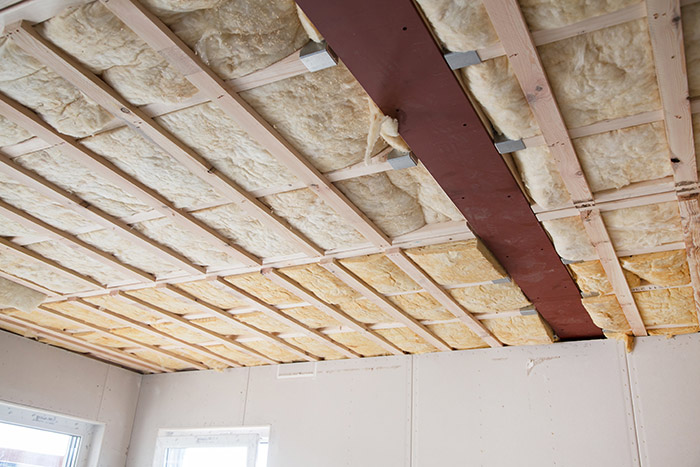
When it comes to insulating your home or building, understanding the concept of R-value is crucial. R-value is a measure of a material's thermal resistance, indicating how well it can resist the flow of heat. In this blog post, we'll delve into the significance of R-value in insulation and how blanket insulation materials measure up in terms of thermal resistance.
R-value, or thermal resistance, is a numerical representation of a material's ability to resist heat transfer. The higher the R-value, the better the insulation's thermal performance. R-value is influenced by factors such as material type, thickness, density, and installation quality.
Efficient insulation is essential for maintaining comfortable indoor temperatures, reducing energy consumption, and lowering utility bills. R-value plays a pivotal role in determining the effectiveness of insulation in controlling heat flow through walls, ceilings, floors, and other building components.
Blanket insulation, also known as batt or roll insulation, is a flexible insulation material typically made from fiberglass, mineral wool, or natural fibers such as cotton or wool. These materials are manufactured in rolls or batts of varying thicknesses to fit between wall studs, floor joists, and ceiling rafters.
Insulation R-value is a critical factor to consider when selecting insulation for your home or building. Blanket insulation provides effective thermal resistance to enhance energy efficiency and indoor comfort. By understanding the concept of R-value and the characteristics of different insulation materials, you can make informed decisions to optimize insulation performance and reduce energy costs. Contact Custom Insulation Company for your blanket insulation needs.
27 January 2024

Transform your home into a more efficient and comfortable space with blown in insulation. With the frigid winter weather ahead, make sure that your insulation is performing as well as it should be. Making sure your attic is adequately insulated is the key to keeping your home cozy and warm.
Experience the power of blown-in insulation, your energy-efficient shield. This is the ultimate shield against energy waste and high bills. This is a versatile insulation which is ideal for hard-to-reach spaces and offers better insulation, saving energy and lowering costs on your energy bill. Blown-in insulation involves filling stud or joist cavities with insulation material that has a high R-value and will effectively insulate. These tiny pieces of material are blown into walls, attics, joists, and cavities using a log hose. Proper insulation will make a significant difference in keeping your home cozy and energy-efficient during the winter season. Stay warm in the winter and cool in the summer with blown-in insulation. Further, blowing in insulation does more than make your home cozy, it is also good for the environment.
Ready to transform your home while contributing to a greener planet, blown-in insulation is your way of making a positive impact on the environment. Let the professionals handle it. And by professionals, we mean us, your knowledgeable team at CIS Insulation.
For more tips on Blown-in Insulation, contact Custom Insulation Company, Inc.
24 January 2024
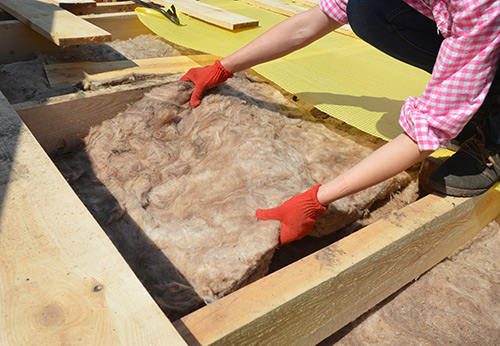
For long term results, an effective way of keeping warm is by improving the insulation in your home. Insulation is one solution. Explore better energy efficiency and comfort in your home by using blanket insulation. It is the best insulation choice for your home.
Blanket insulation is commonly used in commercial buildings or homes. It is often the most cost-effective attic insulation solution to combine a thermal material like fiberglass batt insulation with a radiant barrier in the ceiling that will help your roof reflect rather than absorb heat from the sun. It greatly improves the energy efficiency of your home. Batt insulation is made up of small fibers mostly fiberglass and installed in spaces without many obstructions like pipes, wiring, etc. such as unfinished walls including foundation walls, floors and ceilings. It is notably fitted between joists, studs, and beams. It will keep your home more comfortable all year long. And the most significant benefit of blanket insulation is reducing noises from outside and between different rooms and floors inside.
This blanket insulation is widely available and familiar among homeowners. With the standard widths and thicknesses which are designed to fit between studs, joists, and rafters. Installation is easy. It is one of the best types of insulation to use for sound control. Contact us and we will help you start saving money with the right insulation!
For more tips on Blanket insulation, contact Custom Insulation Company, Inc.
19 January 2024
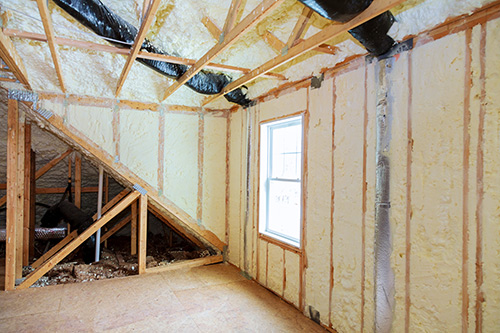
Elevate your home's energy efficiency while contributing to a greener planet by making the smart choice of spray foam insulation. Our highly skilled technicians guarantee a seamless application, ensuring long-term benefits for your home and the environment alike. Beyond merely reducing energy consumption, spray foam insulation actively promotes sustainability, allowing you to diminish your carbon footprint. This not only aligns with eco-conscious values but also positions your brand favorably, attracting environmentally aware clients and enhancing your reputation.
The advent of spray foam insulation has transformed the dynamics of the insulation industry, particularly for residential properties. Homes lacking proper insulation often grapple with soaring energy bills, as heating and cooling systems work tirelessly to maintain optimal temperatures. The revolutionary benefits of spray foam insulation extend beyond cost savings, addressing irregular heating and cooling patterns while optimizing furnace and air conditioner efficiency. Furthermore, it acts as a barrier against mold growth, eliminates draft sources, and deters pests, ensuring your home's durability, energy efficiency, improved air quality, and enhanced structural integrity.
Opting for spray foam insulation translates into a comprehensive package of advantages, including energy efficiency, moisture control, and enhanced air quality. With a swift and efficient application process devoid of mechanical fixings, it stands out as the preferred choice for many customers. If you find yourself deliberating on the best insulation solution for your space, don't hesitate to reach out to us for more information.
For valuable insights and expert advice on Spray Foam Insulation, contact Custom Insulation and Company, Inc. and make an informed choice for a sustainable and comfortable living environment.
12 January 2024

Insulation is often an overlooked home improvement. When it comes to insulating your home, there are a variety of different methods of blanket insulation for you to choose from. Make sure that you choose the best method where you will receive countless benefits to insulating your home.
Blanket insulation comes in the form of batts or rolls. Choosing batt insulation is available in pre-cut panels while roll insulation comes with and without facing, and it is cut and trimmed to fit the space you are filling. There are countless benefits which blanket insulation offers. It includes a lower energy bill, year-round comfort by helping your home maintain a comfortable temperature and noise reduction from outside and between the floors and different rooms. These two forms of blanket insulation are usually made of fiberglass, mineral wool, plastic fibers and natural fibers. In addition, with blanket insulation it is normally installed in spaces without too many obstacles such as pipes or wiring, fitted between beams, joists, and steel studs. It is usually used in areas such as unfinished walls, floors and ceilings. The amount of blanket insulation needed will depend on the type of heating and cooking system you have and the part of the house you plan to insulate.
Most homeowners prefer blanket insulation in their homes because it is affordable and less expensive than foam insulation. It is very energy efficient and it is environmentally friendly. It is always best to speak with a professional home improvement contractor who will assess your needs and if blanket insulation is right for you.
Need to install a blanket Insulation, contact Custom Insulation Company, Inc.
29 December 2023

Experience the power of blown-in insulation, your energy-efficient shield. Blown-in insulation will keep your home super toasty during this cold winter season. Stay cozy and save energy. This insulation will be your ultimate shield against energy waste and high bills.
Living in a moldy environment that leads to depression is a thing of the past. It has been documented time and time again that living in a damp, moldy home causes physical consequences such as respiratory problems, headaches, fatigue and sore throats. Today, with the latest technology on blown in insulation, these worries will be resolved. With blown-in insulation, the right insulation will make a significant difference in keeping your home cozy and energy-efficient during the winter season. This is the right time to upgrade your insulation. Do not worry we have that expertise to bring back that cozy feeling. We ensure that your insulation is in top-notch condition. Further, with blown-in insulation, it does more than make your home cozy but it is also one way of making a positive impact on the environment.
Hence, transform your home while contributing to a greener plant with blown in insulation. It will benefit you and the world you share. This versatile insulation solution is ideal for hard-to-reach spaces and offers better insulation, saving energy and lowering costs on your energy bill.
For more tips on blown-in Insulation, contact Custom Insulation Company, Inc.
25 December 2023
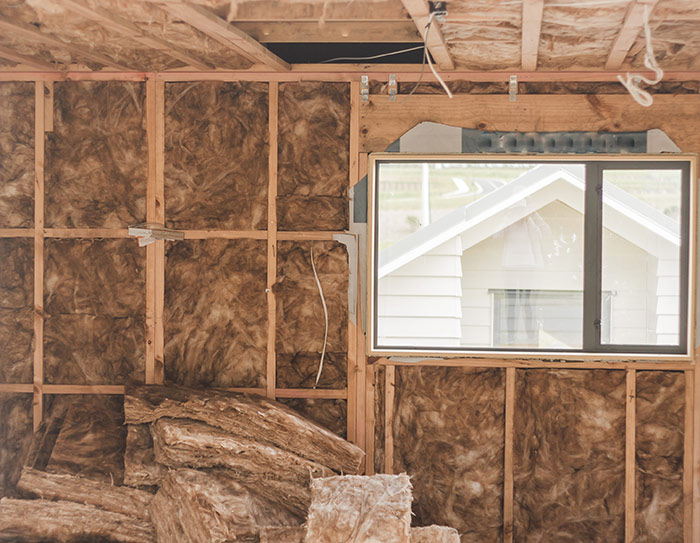
Thinking of ways to save money for next year, then home insulation will be at the top of your list. With blanket insulation, it will be one of the most widely installed types of insulation, used for both new home construction and retrofit jobs. An insulation upgrade is a great way to reduce your heating and cooling costs.
Blanket insulation is thin strips of insulation with a paper-backing that sits in between stud joists to fill a void and provide necessary insulation. It is an inexpensive way to insulate your home. Some batt insulation comes with foil or paper (kraft) facing and some comes with no facing. The need for facing is determined by your climate and whether you need a vapor barrier in the area of your home you are insulating. Blanket makes a good insulator. It is designed to prevent heat transfer from you to the outside world. Accessibility wise it is widely available and familiar and standard widths and thicknesses are designed to fit between studs, joists, and rafters. It is installed in spaces without any obstructions such as unfinished walls, floors and ceilings. It comes in convenient rolls that are easy to transport and carry. Most applications are ideally suited to 1” thick insulation.
Further, insulation blankets are made in a range of thicknesses. There are several variables that impact blanket thickness, among them air flow velocity, amount of heat produced, ambient temperature, insulation material and emissivity. However, there are cases when a customer has a specific need where they feel that 1” is not sufficient, then it must undergo evaluation where alternative thickness is indeed suitable.
For more tips on Blanket Insulation, contact Custom Insulation Company, Inc.